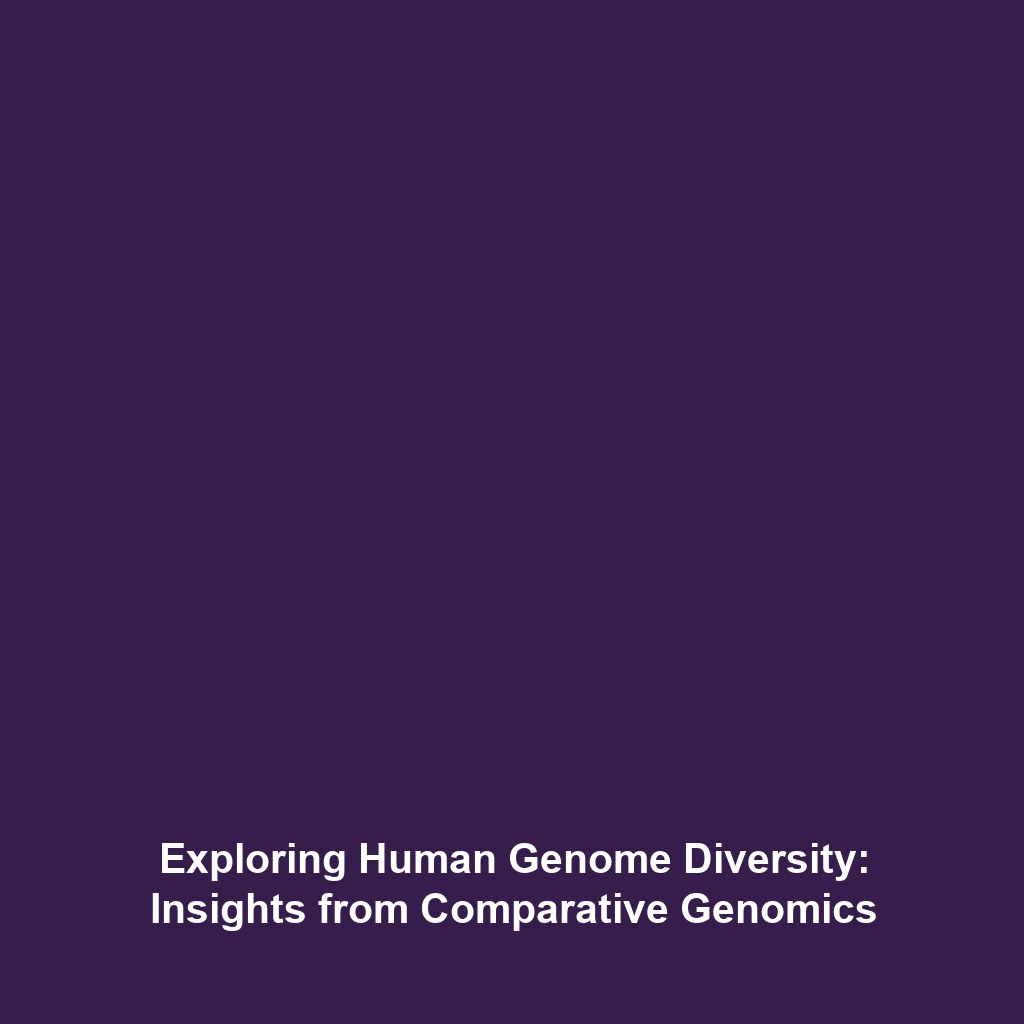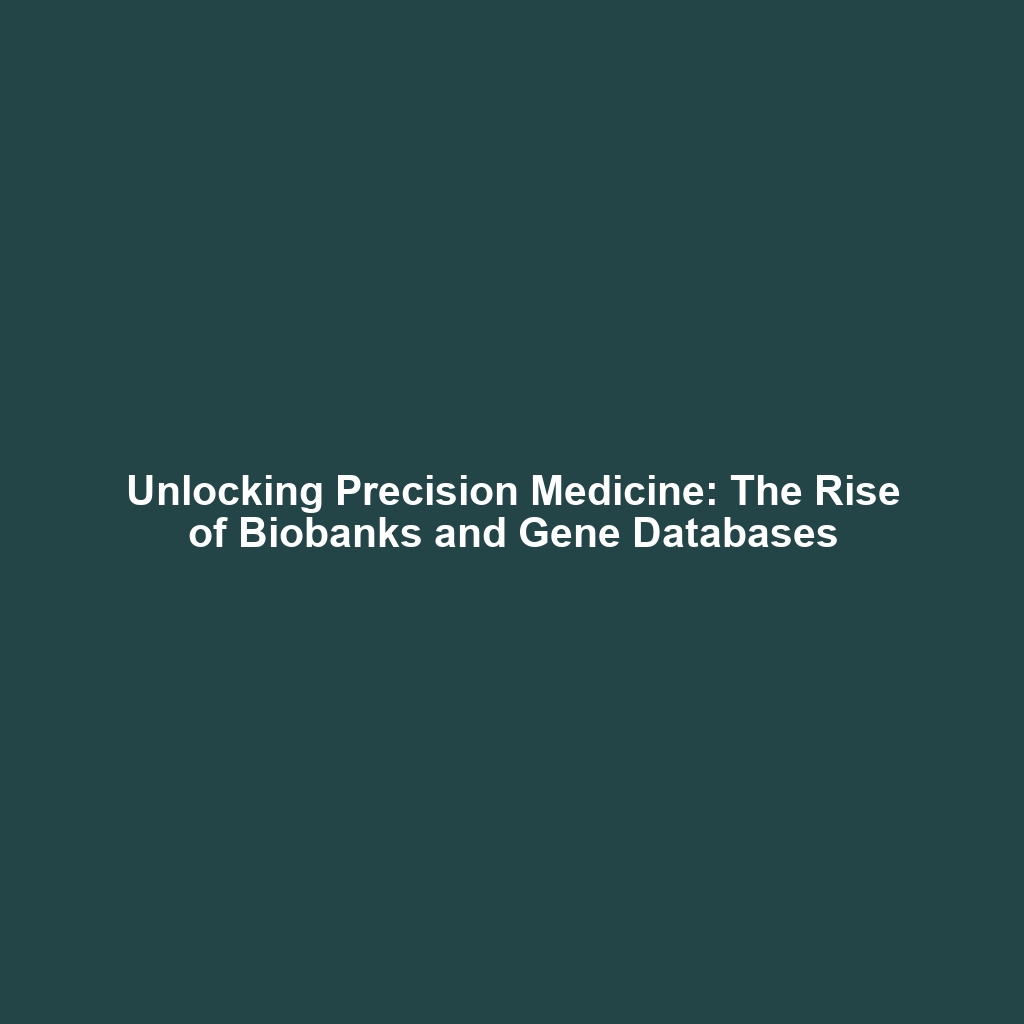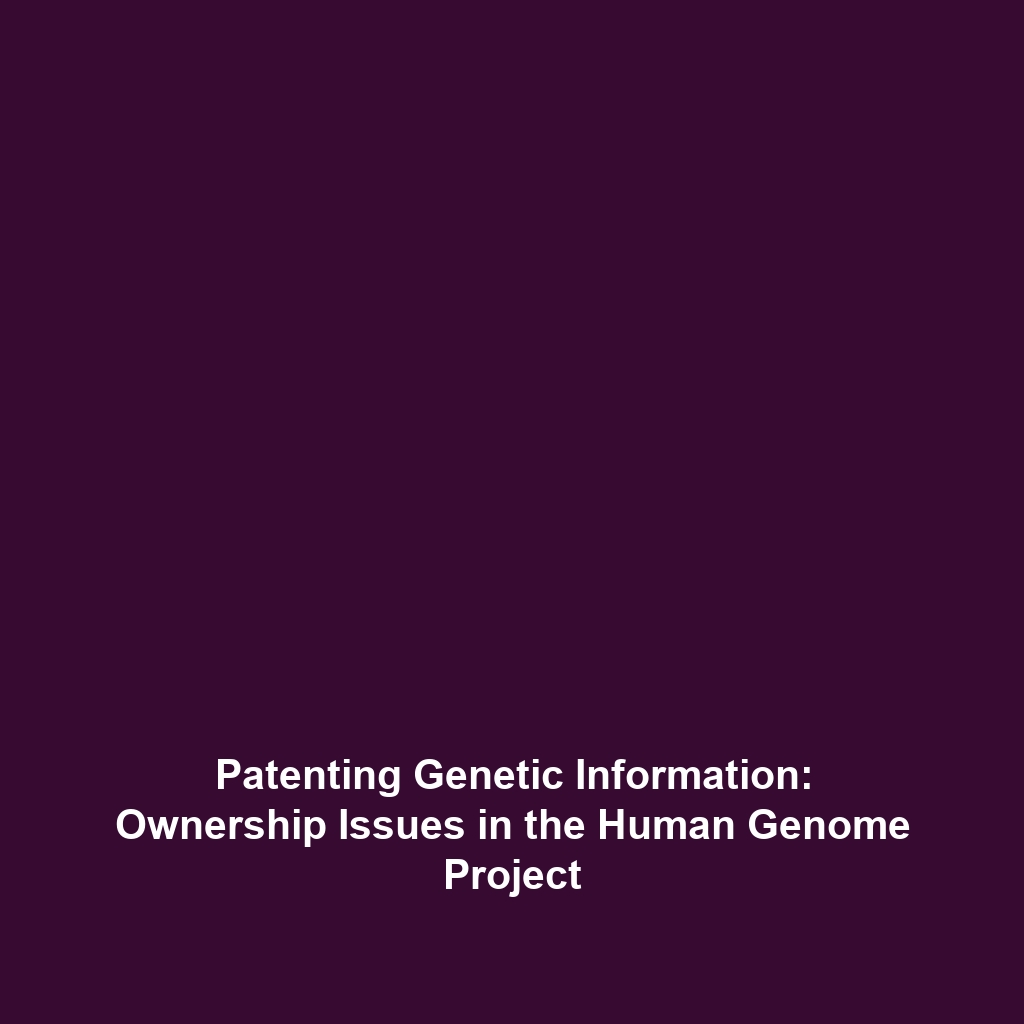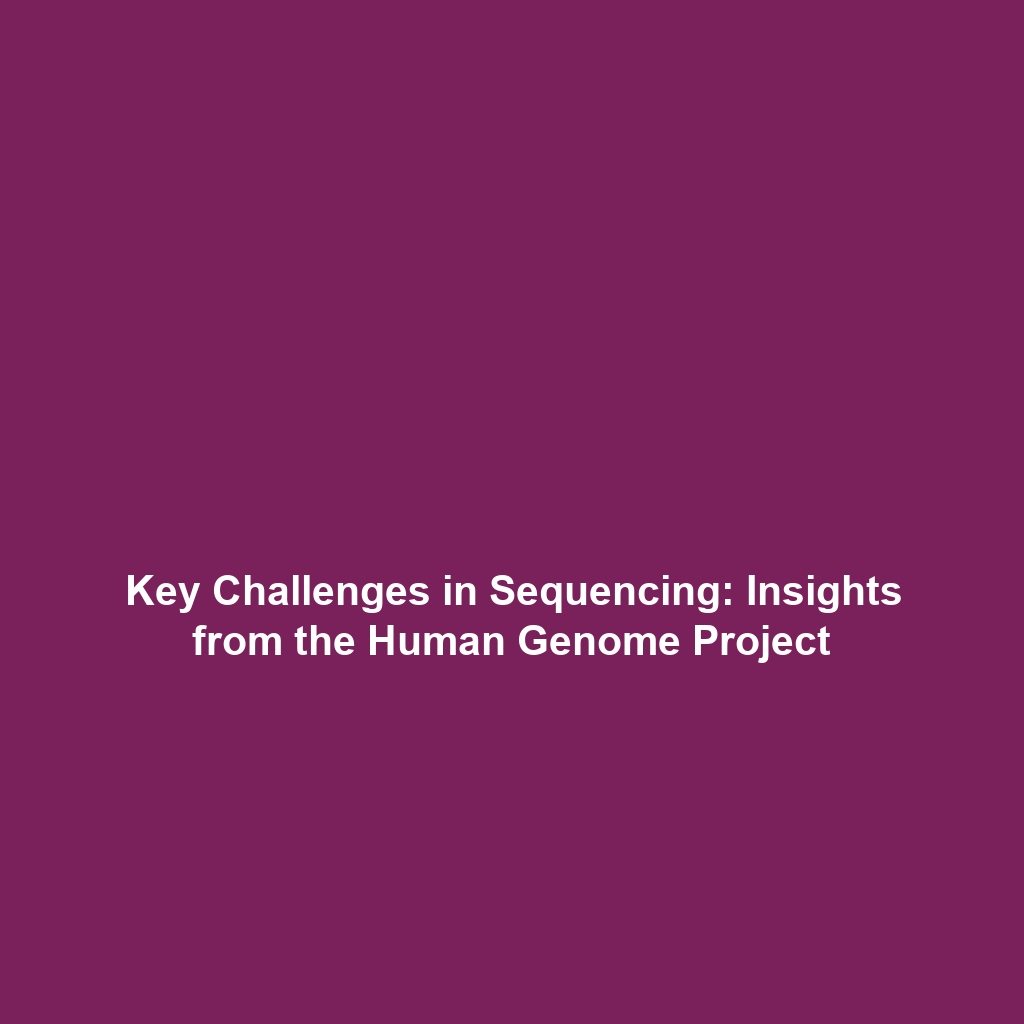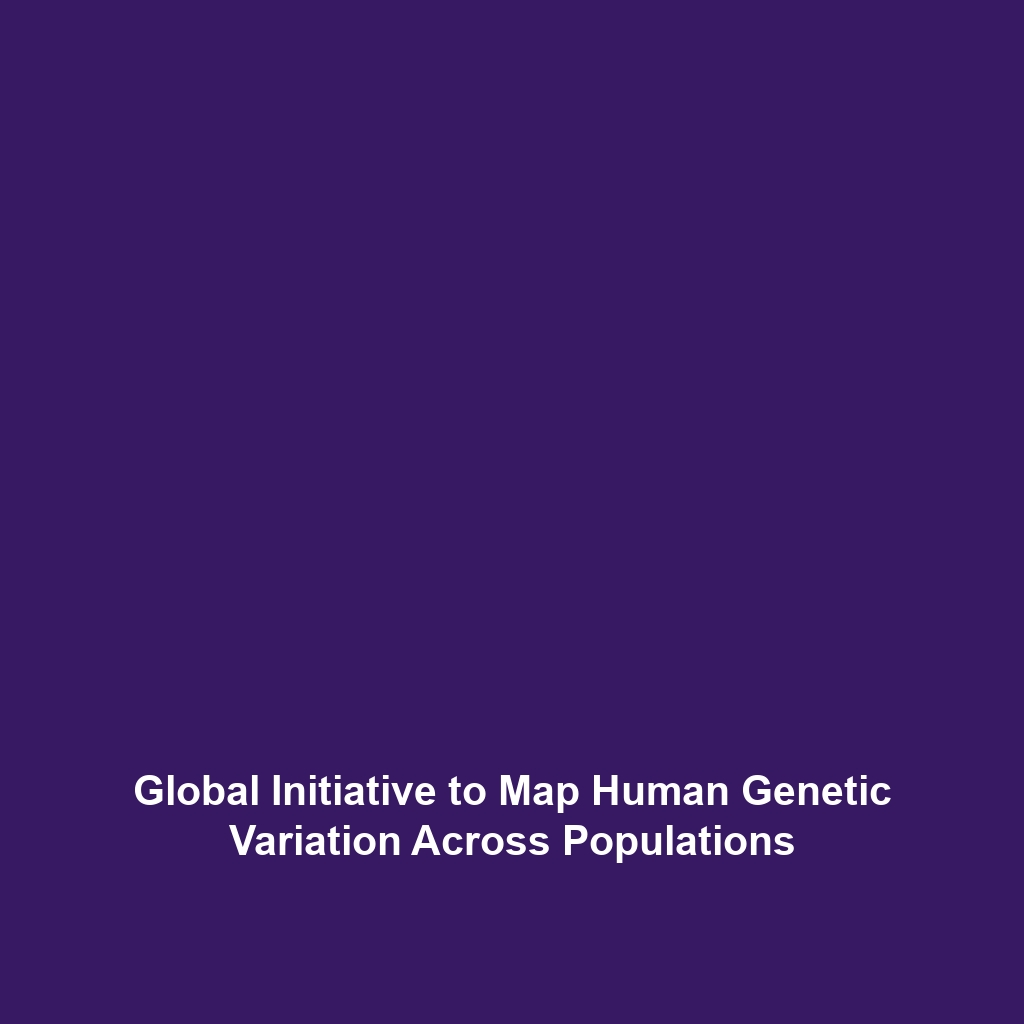The Impact of Bioinformatics on the Human Genome Project
Introduction: The need to manage and analyze vast amounts of genomic data has led to the rapid growth of bioinformatics, an interdisciplinary field merging biology, computer science, and data analysis. This evolution is profoundly significant within the context of the Human Genome Project (HGP), which aimed to map the entire human genome. As genomic data becomes increasingly complex, bioinformatics is pivotal in translating this information into actionable insights, allowing for advancements in personalized medicine, genetics, and evolutionary biology.
Key Concepts
Bioinformatics encompasses several key concepts and principles essential to the Human Genome Project:
- Data Management: Efficiently storing and retrieving large datasets generated by genomic sequencing.
- Sequence Analysis: Utilizing algorithms to analyze DNA, RNA, and protein sequences to identify genetic variations.
- Comparative Genomics: Comparing genetic material across different species to understand evolution and function.
- Structural Bioinformatics: Analyzing the structure of biological molecules to understand their function and interactions.
These principles show how bioinformatics facilitates insights into genomic data, significantly supporting the goals of the Human Genome Project.
Applications and Real-World Uses
The applications of bioinformatics in the realm of the Human Genome Project are numerous and impactful:
- Personalized Medicine: Tailoring medical treatments based on individual genetic information.
- Drug Discovery: Utilizing genomic data to identify potential drug targets and development strategies.
- Disease Diagnosis: Using genomic sequences to diagnose genetic disorders more accurately.
- Public Health: Analyzing population-wide genomic data to track disease outbreaks and ancestry.
These applications illustrate how bioinformatics is used to further the ambitions of the Human Genome Project.
Current Challenges
Despite its advancements, bioinformatics faces several challenges:
- Data Overload: The sheer volume of genomic data can overwhelm traditional data analysis methods.
- Interoperability: Different data formats and standards complicate data sharing and integration.
- Ethics and Privacy: Safeguarding sensitive genomic data is essential, yet challenging.
- Interpretation of Data: Distinguishing clinically significant findings from incidental ones remains difficult.
These issues highlight the challenges of bioinformatics within the broader context of the Human Genome Project.
Future Research and Innovations
Looking ahead, innovations in bioinformatics promise to transform genomic analysis further:
- Artificial Intelligence: Machine learning algorithms will improve data analysis and interpretation.
- Next-Generation Sequencing (NGS): Advances in NGS technologies will enhance the speed and cost-effectiveness of genomic research.
- Cloud Computing: The use of cloud platforms will facilitate data storage and sharing on an unprecedented scale.
These breakthroughs signify a future where bioinformatics continues to drive the objectives of the Human Genome Project.
Conclusion
In summary, the intersection of bioinformatics and the Human Genome Project demonstrates profound implications for health and science. Addressing genomic data management, analysis, and ethical considerations is crucial for maximizing the potential of genomic research. As advancements continue, the future of bioinformatics remains bright, paving the way for new discoveries in personalized medicine and beyond. For further exploration on this topic, consider reading more about personalized medicine and genomic data security.


